Submitted by Farzam Kharvari
Technology in the heart of nature
Iran Architecture News - Nov 18, 2018 - 07:12 17728 views
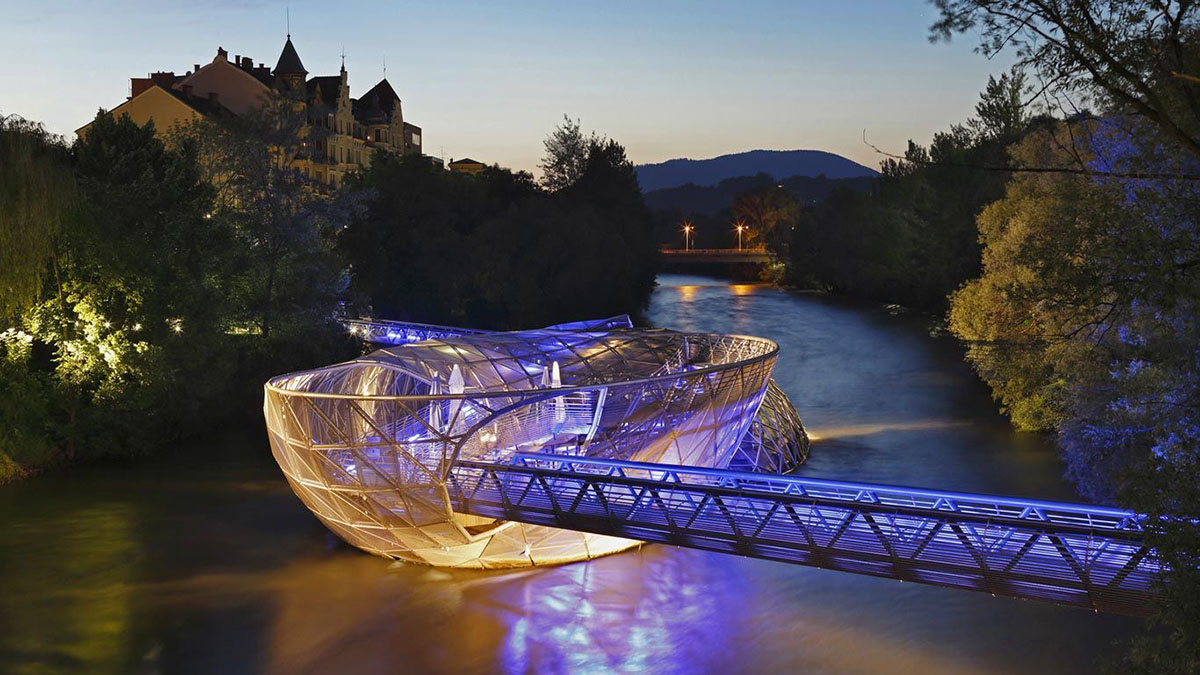
Have you ever wondered how technology can modify our environment? Or, how technology granted us new experiences in our own environment?. The possible answers are about the usefulness of robots, spaceships, skyscrapers, and etc., but how about blending nature and technology. One of the primary precedents of such tries was the Philip Johnson’s Glass House with all its critiques.
However, in the heart of Graz, second largest city of Austria, lies an island in the river which blends the nature and technology in a very different way. The Murinsel or Mur Island is an artificial floating island on Mur river in Graz, Austria. It was completed in 2003 and since then it is one of the landmarks of Graz. However, the history of such collaboration between technology and environment dates back to 260 AD.
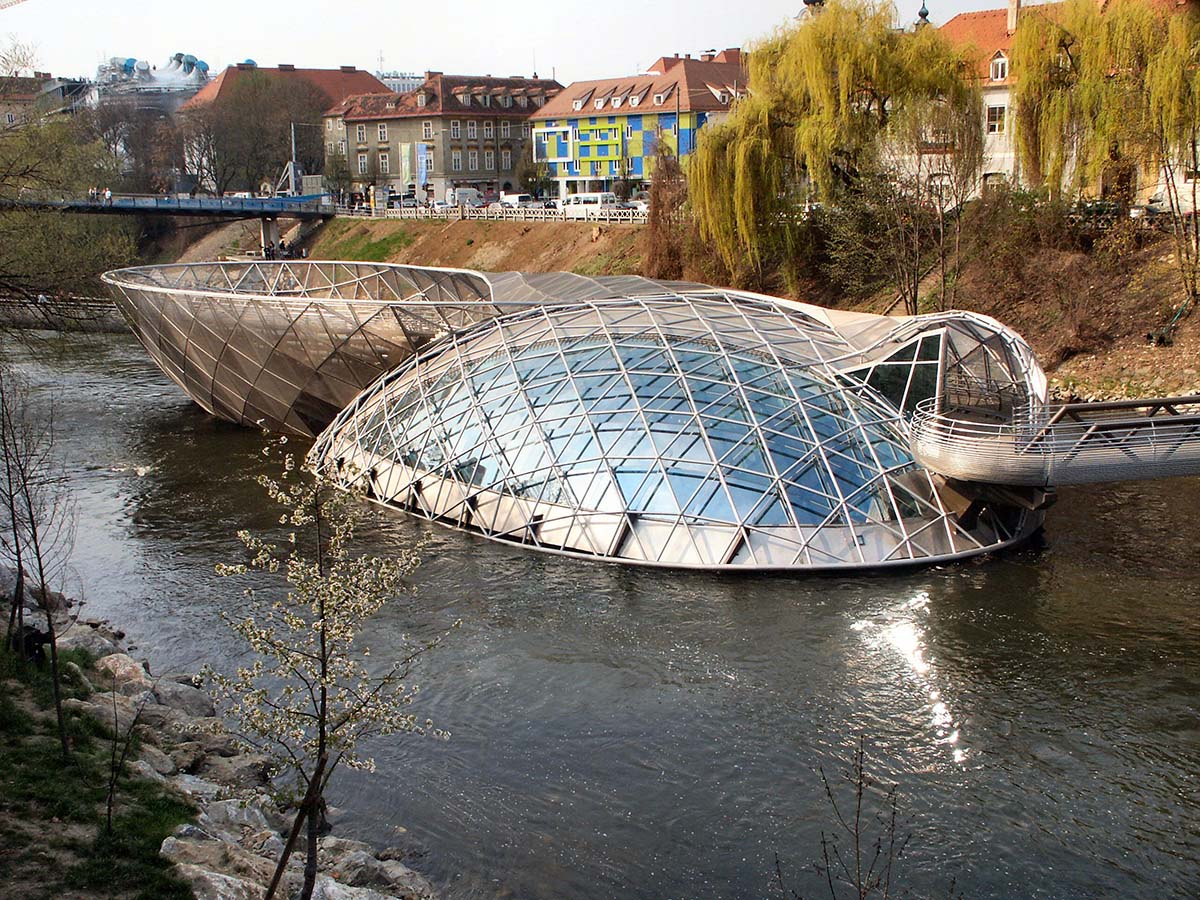
A view of Murinsel designed by Acconci Studio/Vito Acconci. Image courtesy of Commons Wikimedia
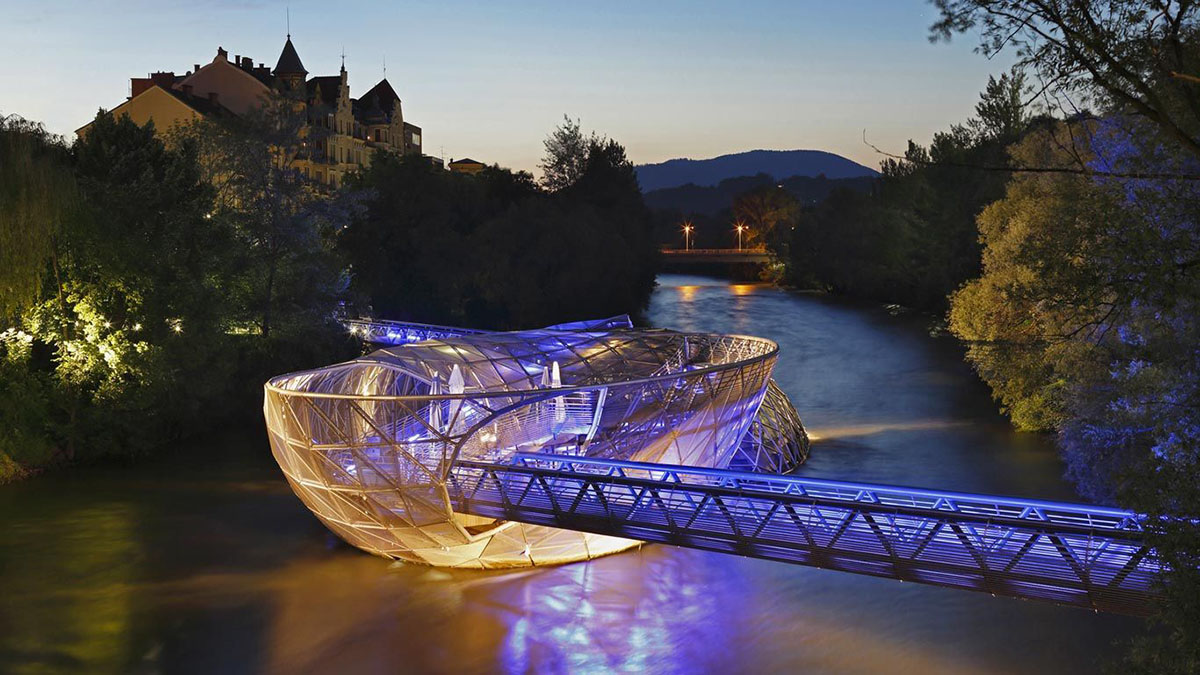
A view of Murinsel. Image courtesy of Graz Tourismus
During the Sassanid era (circa 224-661 AD), Shapur I ordered the construction of the world’s oldest still standing bridge named the Dezful Bridge in the city of Dezful. It is one of the primary precedents that is still standing, however, its function is limited to connecting the east and west of the city. Centuries after, rethinking the bridges during the reign of Shah Abbas the Great brought up new concepts about the function of bridges. Most of the bridges to that date were used for two main different purposes including connectors of two sides of a village or etc. and acting as a weir for the adjacent lands.
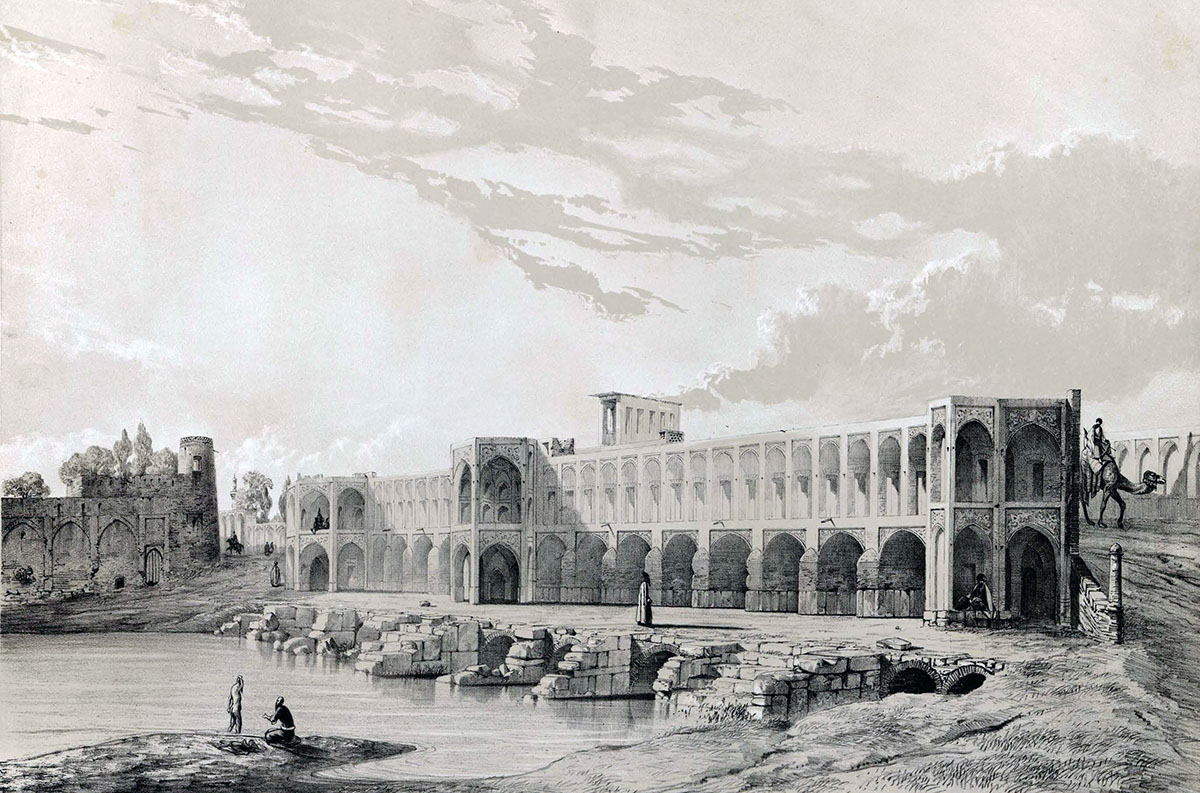
Kahju Bridge in 1851. Image © Voyage en Perse, avec Flandin, éd. Gide et Baudry, 1851
On the Zayanderud, the biggest river of Iranian plateau which passes from the heart of Isfahan, stands a bridge named Khaju which was ordered by Shah Abbas the Great to be built on the river. The primary intention of him was to connect the two neighborhoods of the northern and southern banks which were named as Khaju and Zoroastrian neighborhoods. In addition to the functional purpose of the bridge, he also ordered the architect to build a leisure area for him and his family so that he can watch the city and Zayanderud.
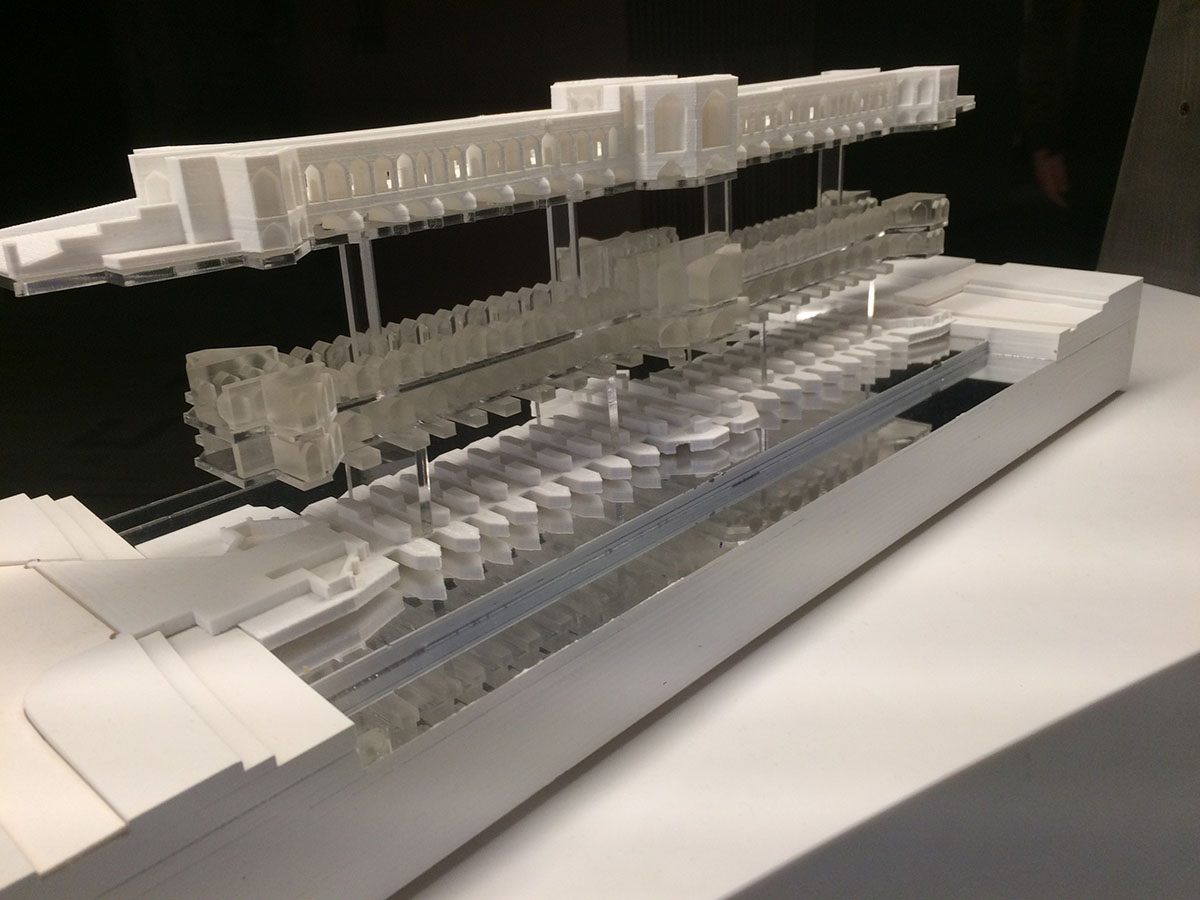
Khaju Bridge in Venice Biennale. Image © Farzam Kharvari
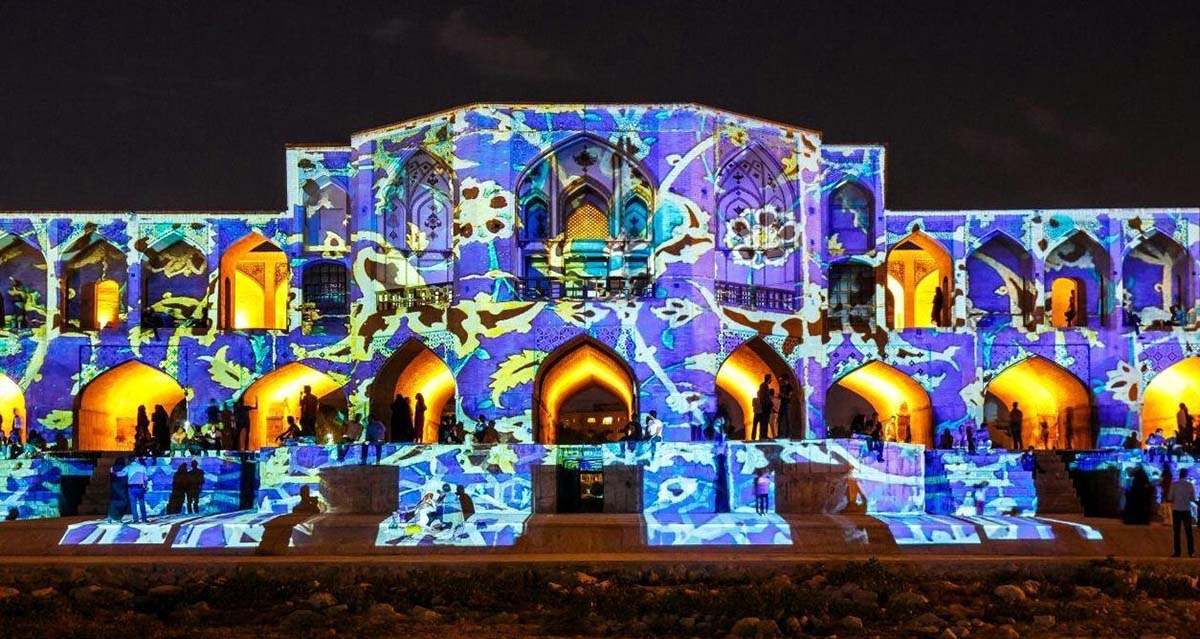
Projection mapping on Khaju Bridge. Image courtesy of Department of Ziba-Sazi of Isfahan
There is another important bridge on Zayenderud named Si-o-se-pol which was also ordered by Shah Abbas to be built three kilometers far from the Kahju bridge that connects the elite mansions neighborhood to Jolfa, an Armenian neighborhood in the city. This bridge works as a joint between two neighborhoods, a weir, and a place for locals to spend their free time.
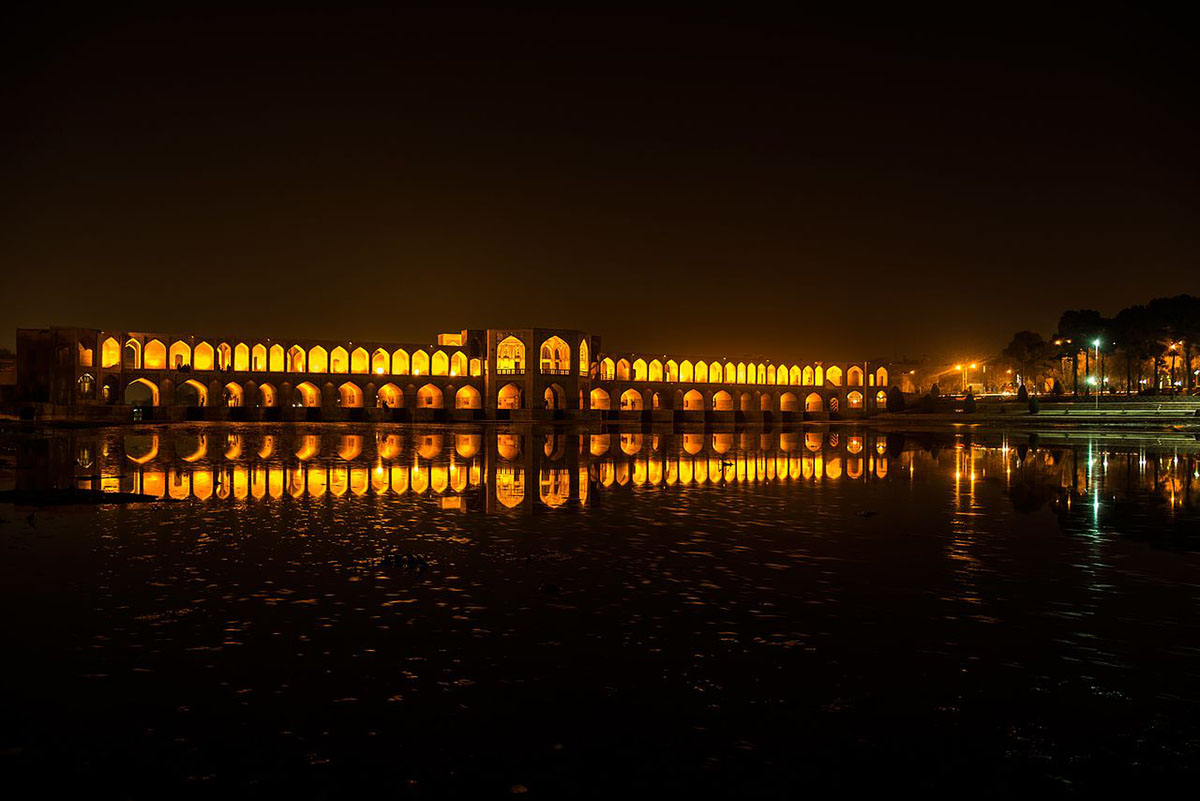
Image: A view of Khaju Bridge. Image © Alireza Obohat

A view of Si-o-se-pol. Image © Alireza Javaheri
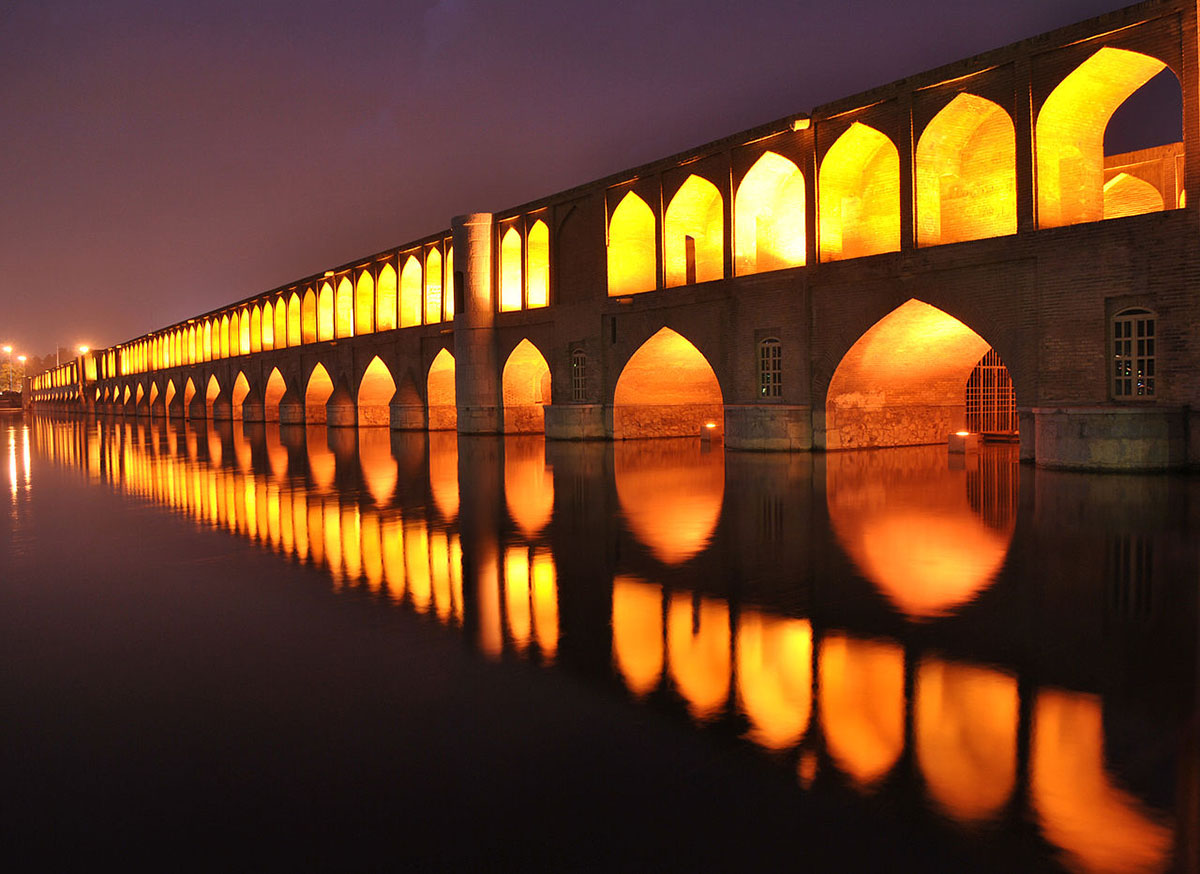
A view of Si-o-se-pol. Image © Reza Haji-pour
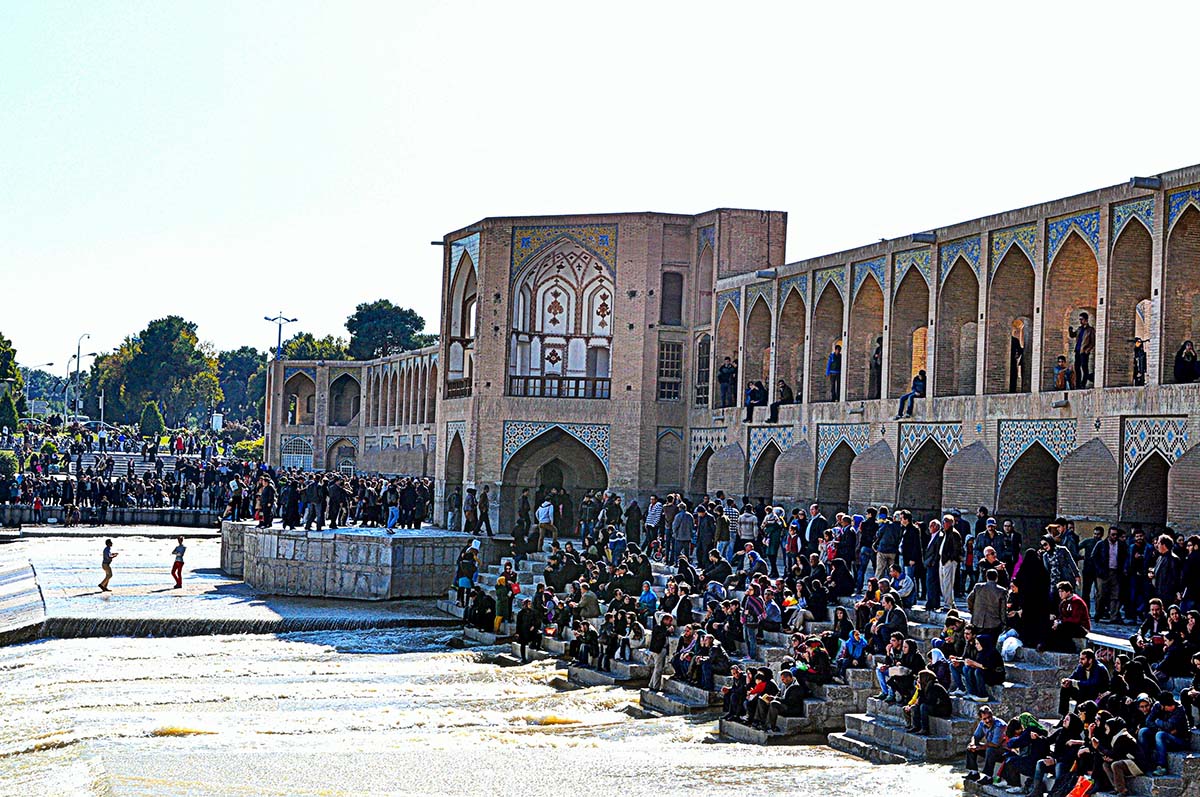
People sitting on the stairs of Khaju Bridge. Image © Saeed Majidi

A view of Si-o-se-pol. Image © Alireza Javaheri
What is important is that designers, whether architects or engineers have been using technology to improve the environment and the way humans can experience it. Khaju bridge was made possible through technology and the smart use of it granted the citizens a place for their leisure time that they may have never experienced before. Sitting right in the middle of the river and viewing the surrounding environment has been a significant part of the citizens' social life since the construction of these bridges. Most of the world’s explorers described Khaju bridge as a masterpiece of its time and described it in detail.
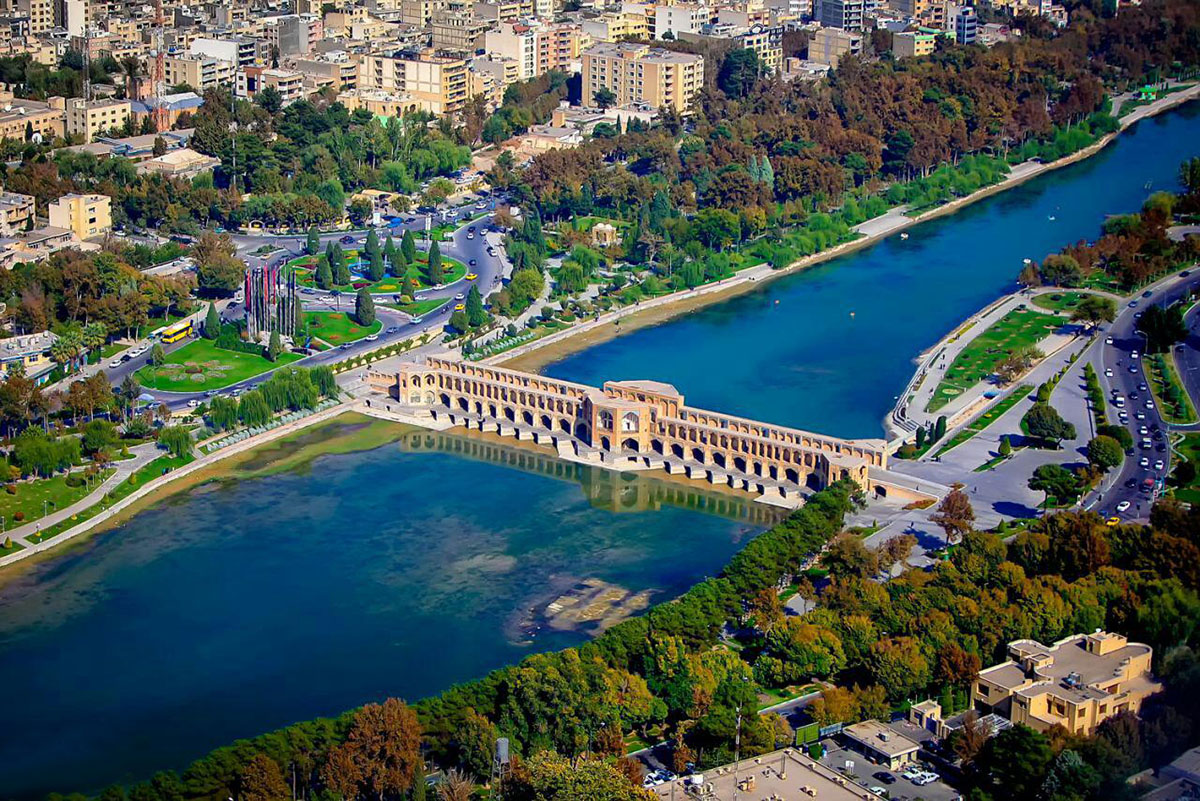
Khaju Bridge. Image courtesy of "Isfahan-e-Ma"
A man singing a love poem under the archs of Khaju Bridge.
Khaju bridge and Si-o-se-pol may not be similar to Murinsel in form or shape but related in what they offer; a different experience of our surrounding environment which was made possible through technology. Khaju and Murinsel also have a cafe or teahouse in common which is open to the public. All these are signs of humans' interest to build fascinating structures by using their technology for making the best out of their environment.
Top image: A view of Murinsel. Image courtesy of Graz Tourismus
> via Based on comparative study of historic bridges of Isfahan
